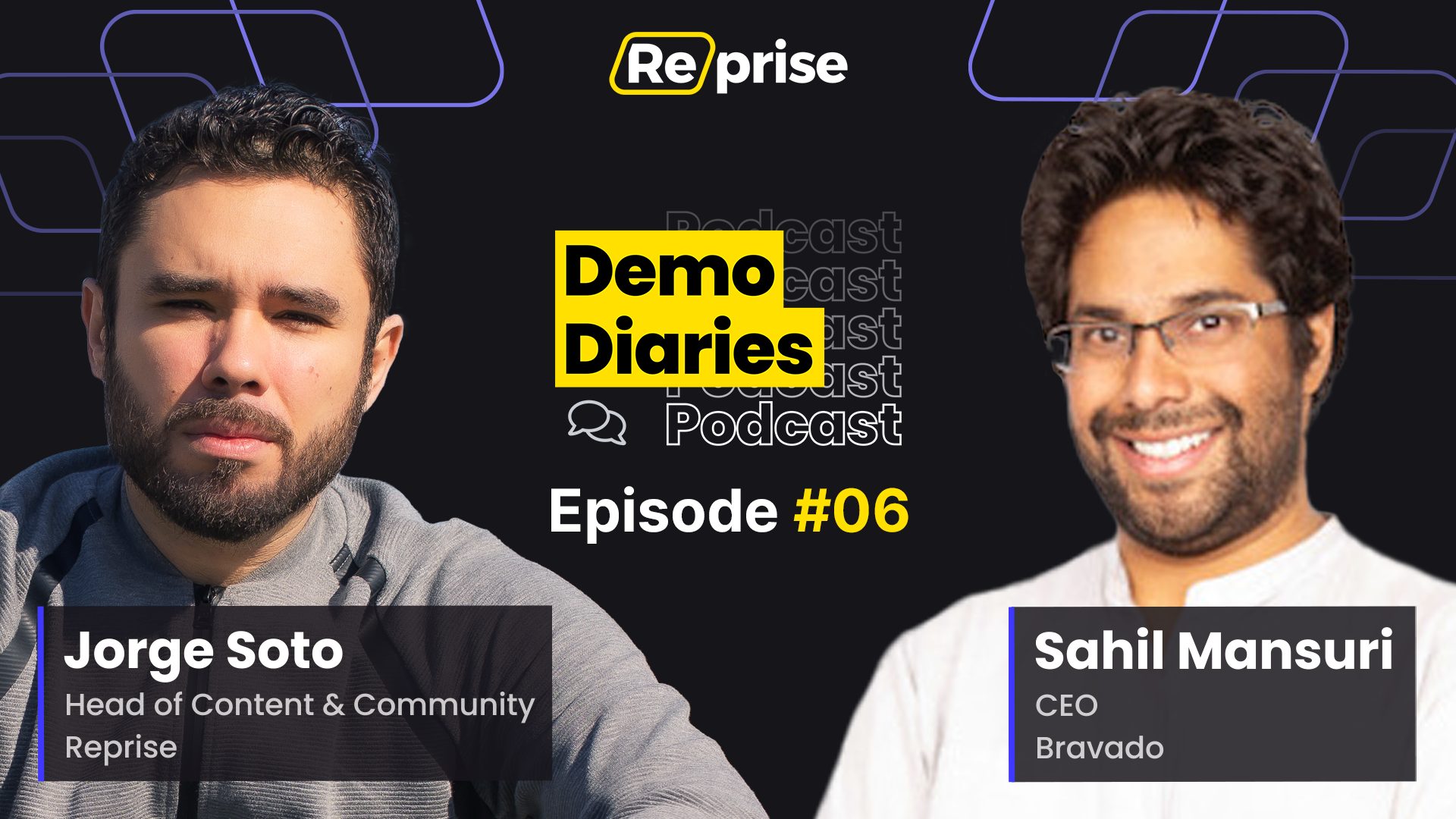For the latest episode of Demo Diaries, I had the pleasure of talking to my good friend Sahil Mansuri, the CEO at Bravado, about making your demo not just effective but truly magical. If this conversation doesn’t inspire you, I don’t know what will – so let’s get to the recap.
Meet Sahil
Sahil started his career working on the Obama campaign in college in field operations, which is basically selling a politician and ideas and policies instead of a product. He loved having a really engaging conversation with a stranger about all kinds of topics and building rapport and trust based on empathy.
When he moved to the world of SaaS, it was a completely different and aggressive environment. So he decided to bring his respectful, empathetic approach to SaaS sales. And sales is certainly his passion – he’s the CEO of Bravado now but is also still an active salesperson for the company (as he notes pretty much every CEO is in some way).
Where do you go to produce a demo?
Sahil still loves to do demos, and does them frequently. At Bravado, they do it live on the product by bringing people to the live site and going through the process then and there. There’s no demo environment because while a live approach does bring challenges, so does having a demo environment. The product evolves and changes and the demo needs to be updated, and it rarely is in time. And as a small company, they don’t have the bandwidth to set up and maintain a separate demo environment.
But other demo techniques, like cobbling together some videos and slide decks, just don’t deliver. It’s like selling a car on the car lot by showing a picture of the model – if it’s a SaaS product and you’re demoing it with slide decks, etc. then that’s not a good experience.
It’s an imperfect solution either way. He’s never worked at a company where this has been figured out well, so this is a struggle for most companies.
Onboarding and training reps to stay on course
Enabling and training your sales reps to deliver a great demo is about finding a balance between allowing personalization, which is important to making the sale, and having some sort of a script to keep everyone on the same track.
You want reps to personalize each demo by listening to the discovery conversation and then showing relevant examples and mapping features to what the prospect has already told you they want. But this can be really hard to do at scale with reps who are in the middle of the pack or just not performing that well – and that’s always a problem as a sales leader.
There are two signs that people are new to doing demos. One big tell is when reps don’t customize it enough to what the prospect told you they want in discovery. This is frustrating for prospects because they have to repeat themselves and they shouldn’t need to. And another common issue comes with experienced AEs who are great at selling but can’t deliver on the technical front, which is also not a great demo experience.
Top tip for improving your demo
It’s called a demo, not a prospect training. The point of a demo is to show you what’s possible and the multiple ways in which it’s possible, not provide a detailed and exhaustive training on the product. It’s meant to be inspirational, kind of like a magic show – you don’t tell them how a trick is done but you capture their attention in the moment.
Demos should be both educational, entertaining, and informative, and all three combine to create that moment when the customer goes, “Woah, that’s awesome!”
Watch the full episode here:






